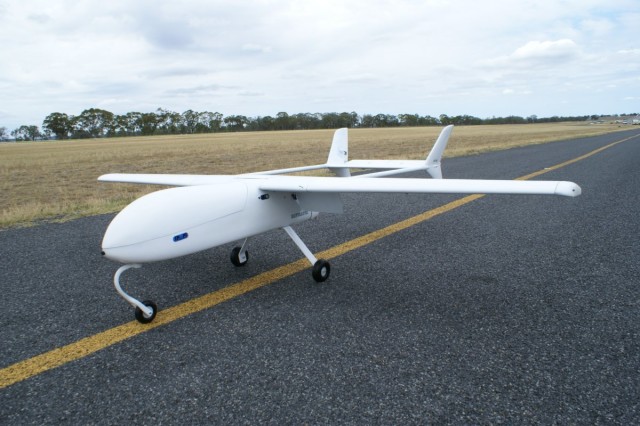 The Australian Civil Aviation Safety Authority CASA has issued the first 24 bit address to allow a Remotely Piloted Aircraft System (RPAS) to be fitted with ADS-B (Automated Dependent Surveillance-Broadcast) so it can be seen by air traffic control and other commercial aircraft during flight.
The Australian Civil Aviation Safety Authority CASA has issued the first 24 bit address to allow a Remotely Piloted Aircraft System (RPAS) to be fitted with ADS-B (Automated Dependent Surveillance-Broadcast) so it can be seen by air traffic control and other commercial aircraft during flight.
This is seen by the RPAS industry to be a major breakthrough and will lead to many and varied applications involving unmanned aircraft in general airspace around the world.
Australia currently leads the way worldwide relevant to Drone training, flight and commercial operator approvals being in place since 2003. Other countries are still working on their Drone approval process but many countries are expected to come online over the next 2-3 years.
Emanate UAS Pty Ltd Director Kelvin Hutchinson confirmed they had been issued the 24 bit address. “This makes large RPAS able to be flown in areas with larger aircraft as they can be seen by both other aircraft and seen and managed by air traffic controllers” confirmed Kelvin Hutchinson.
Mr Hutchinson also confirmed that Emanate UAS has been issued a provisional patent for a broad suite of technologies relevant to RPAS.
“We have developed and patented systems and methods to navigate unmanned aircraft, and to undertake automated collision avoidance manoeuvres with unmanned aircraft”. “The systems are embodied in the unmanned aircraft and a ground control station that is configured to communicate with and control the unmanned aircraft”. “The unmanned aircraft has onboard, multiple types of sensors, to detect and monitor the location of potential airspace obstructions such as aircraft, balloons and gliders” advised Mr Hutchinson.
“A major breakthrough in these technologies is our ability to communicate through the unmanned aircraft, which may be hundreds of miles away, with other aircraft and air traffic control via VHF voice communications from the ground control station”. “This is a first and we believe an essential requirement when authorities such as CASA start to allow more RPAS flights beyond visual line of sight” said Mr Hutchinson.
Most licensed RPAS operators in Australia and around the world are restricted to flight below 400 feet and only within visual line of sight. This is proving to be an impediment to making money out of RPAS fitted potentially with an array of cameras and other forms of sensors.
Emanate UAS is banking on aviation authorities around the world requiring RPAS operators to have a VHF radio fitted and sense and avoid capability which will allow them to fly in airspace along with other major commercial operators.
“CASA treats RPAS however large or small as a traditional aircraft utilising airspace so they must be controlled and monitored by air traffic control and other aircraft during remote flight to ensure safety at all times” said Hutchinson.
Emanate UAS is still undergoing testing of the technologies in Warwick Queensland and hopes to commence further discussion with both CASA and the American Federal Aviation Authority (FAA) to have the technologies approved for general RPAS flight in both Australia and America during the second half of 2015.
“We are installing the radio and sense and avoid technologies into a 20kg RPA Navigator which has 3 hours endurance and can fly at 100 knots or 184 k/h” said Mr Hutchinson.
Emanate UAS is in discussions with a number of aviation and IT companies interested in the technologies. “We are very encouraged by the interest being shown in our patented technologies and hope that via a collaboration with a major player we can achieve the rollout and approvals much faster” advised Mr Hutchinson.
Photo: ADS-B, FLARM, Sense and Avoid capability and Remote Operated Duplex VHF Radio fitted to RPA Navigator
Source: Press Release

CASA are very inconsistent as usual.
We were going to add ADS-B to a large multirotor (25kg payload, 55min duration) and CASA’s response was “Why?” and “Don’t bother”.
Is this a change in policy?
I have seen no declarations as such?
Or is this another example of the scattered thinking and implementation from a government department that has been caught napping by technology.
NORUT from Tromsø, Norway got their approval for installing and using an ADS-B transponder a couple of years ago. Now a second approval is about to be given to the company Maritime Robotics in Trondheim, Norway.
We have developped a software ANCAS (Automatic Navigation and Collition Avoidance System) in the Escuela Técnica Superior de Ingenieros Informáticos in the Universidad Politécnica de Madrid, Spain and are now goint to test it with RPAS’s but in a fully automatic way without remote pilots. We are so very interested in your approach of fitting RPAS with an ADS-B and specifically which kind of units.
We are also very keen in knowing how “The unmanned aircraft has onboard, multiple types of sensors, to detect and monitor the location of potential airspace obstructions such as aircraft, balloons and gliders” Thankyou very for your information.